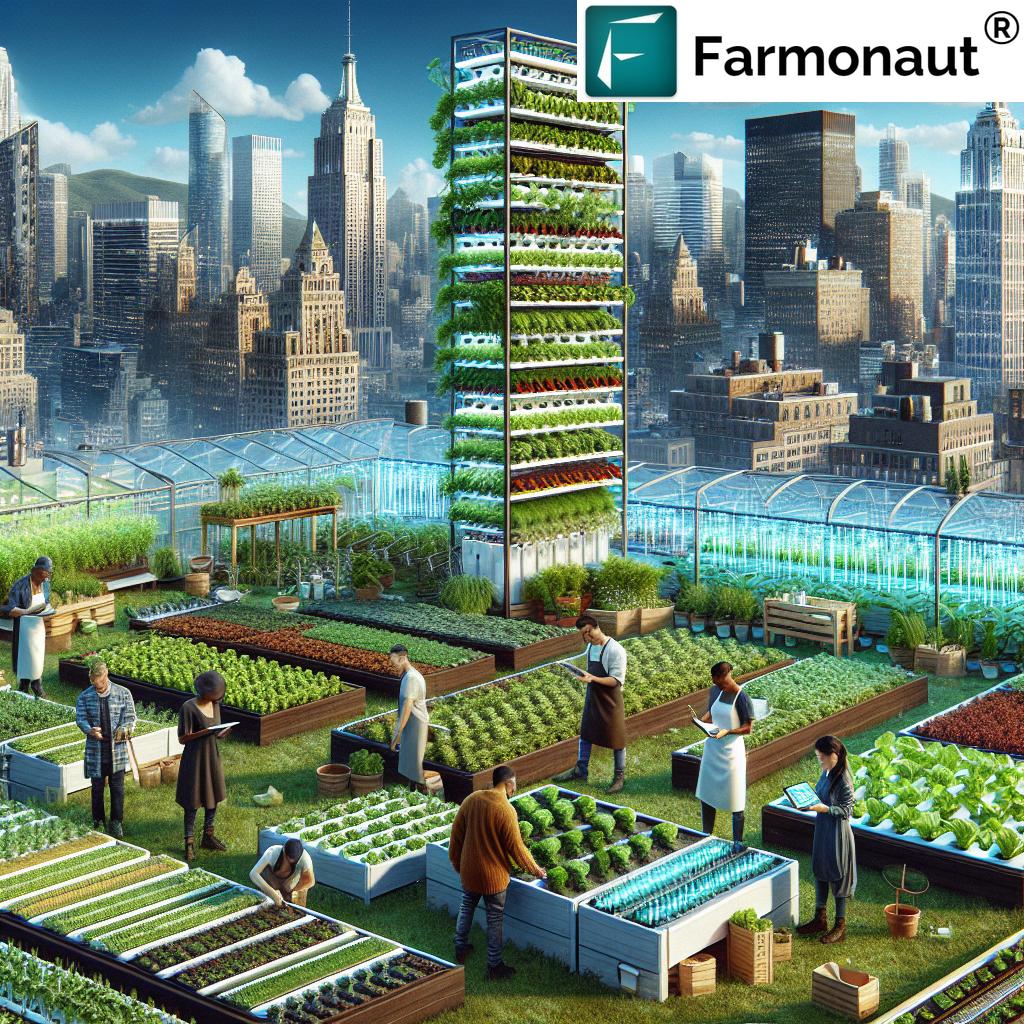Sustainable Solutions: How Texas Citrus Farmers Combat Water Scarcity in the Rio Grande Valley
“The Rio Grande Valley’s citrus industry, worth $300 million, faces severe water shortages threatening its economic impact.”

In the heart of the Lone Star state, a crisis is unfolding that threatens the very foundation of one of Texas’ most iconic agricultural sectors. The Rio Grande Valley’s citrus industry, a cornerstone of the region’s economy and culture, is grappling with unprecedented challenges as water scarcity and climate-related disasters intensify. As we delve into this pressing issue, we’ll explore the multifaceted nature of the problem and the innovative solutions being implemented by resilient Texas farmers.
The Citrus Industry’s Vital Role in Texas Agriculture
The citrus industry in the Rio Grande Valley is not just a part of Texas agriculture; it’s a vital economic engine with an impact exceeding $300 million annually. This sector has long been a source of pride for Texans, producing world-renowned grapefruit and oranges that grace tables across the nation and beyond. However, the industry now faces a perfect storm of challenges that threaten its very existence.
Water Scarcity: The Root of the Crisis
At the heart of the crisis lies a severe water shortage that has been exacerbated by several factors:
- Drought conditions: Prolonged periods of dry weather have significantly reduced water availability.
- Climate change: Shifting weather patterns have led to more extreme and unpredictable conditions.
- Water treaty obligations: Unmet commitments under the 1944 water treaty with Mexico have further strained the water supply.
These factors have culminated in a situation where citrus growers in the valley receive only about half the water required for mature citrus trees. This shortage has had a cascading effect on the entire industry, from reduced crop yields to economic hardships for farmers and workers alike.
The Impact of Natural Disasters
Compounding the water scarcity issue, recent natural disasters have dealt severe blows to the Texas citrus industry:
- Winter Storm Uri (2021): This catastrophic event devastated crops and damaged critical infrastructure.
- Hurricane damage (2020): Severe storms destroyed orchards and disrupted production cycles.
These events not only resulted in immediate crop losses but also impacted future harvests by damaging trees and destroying flowers essential for the next growing cycle.
The Ripple Effect: Beyond Citrus
The water crisis in the Rio Grande Valley extends far beyond the citrus industry. It poses significant risks to:
- Food security: Reduced agricultural output could lead to food shortages and increased prices.
- Economic stability: Job losses and reduced economic activity threaten the region’s overall prosperity.
- Environmental balance: Water scarcity impacts the delicate ecosystem of the Rio Grande Valley.
As we grapple with these challenges, it’s clear that innovative and sustainable solutions are needed to safeguard not just the citrus industry, but the entire agricultural landscape of the region.
Sustainable Solutions: Adapting to the New Normal
In the face of these daunting challenges, Texas citrus farmers are not standing idle. They are actively seeking and implementing sustainable solutions to combat water scarcity and ensure the survival of their industry. Let’s explore some of the key strategies being employed:
1. Efficient Irrigation Methods
One of the most significant advancements in agricultural water management has been the adoption of more efficient irrigation systems. Traditional flood irrigation, while simple, is notoriously wasteful. In contrast, modern methods such as drip irrigation offer substantial water savings:
- Drip irrigation: This method delivers water directly to the plant roots, reducing evaporation and runoff.
- Micro-sprinklers: These provide targeted watering with improved efficiency over traditional sprinklers.
- Subsurface irrigation: By delivering water below the soil surface, this method minimizes evaporation losses.
While these systems require initial investment, they can lead to water savings of up to 60% compared to traditional methods, making them crucial for long-term sustainability.
2. Precision Agriculture and Remote Sensing
The integration of technology in farming practices has opened new avenues for water conservation. Precision agriculture techniques, powered by remote sensing and data analytics, allow farmers to optimize their water usage with unprecedented accuracy.
Here’s where innovative solutions like Farmonaut come into play. This advanced agricultural technology platform offers satellite-based farm management solutions that can revolutionize how citrus farmers manage their orchards:
- Real-time crop health monitoring: Satellite imagery provides insights into vegetation health, helping farmers identify areas that need attention.
- Soil moisture analysis: Remote sensing data can indicate soil moisture levels, enabling precise irrigation scheduling.
- Weather forecasting: Accurate weather predictions help farmers plan their water usage more effectively.
By leveraging these technologies, farmers can make data-driven decisions that optimize water use while maintaining or even improving crop yields.

3. Drought-Resistant Varieties and Rootstocks
Agricultural research plays a crucial role in developing citrus varieties and rootstocks that are better adapted to water-scarce conditions. The Texas A&M AgriLife Research center and other institutions are at the forefront of this effort, working on:
- Developing citrus varieties that require less water
- Breeding rootstocks that are more efficient at water uptake and utilization
- Studying the genetic traits that contribute to drought resistance in citrus plants
By planting these improved varieties, farmers can maintain productivity even in the face of reduced water availability.
4. Soil Management Techniques
Proper soil management is essential for water conservation in citrus farming. Techniques that improve soil structure and water retention include:
- Mulching: Applying organic mulch around trees reduces evaporation and maintains soil moisture.
- Cover cropping: Planting cover crops between rows of citrus trees improves soil structure and water infiltration.
- Composting: Adding organic matter to the soil enhances its water-holding capacity.
These practices not only conserve water but also improve overall soil health, leading to more resilient and productive orchards.
Policy and Collaborative Efforts
Addressing the water scarcity issue in the Rio Grande Valley requires more than just on-farm solutions. It necessitates a coordinated effort involving multiple stakeholders:
1. Water Treaty Negotiations
The United States and Mexico are engaged in ongoing discussions to address the water delivery obligations under the 1944 water treaty. Recent amendments have allowed for alternative delivery methods, but more comprehensive solutions are needed to ensure a stable water supply for the region.
2. State and Federal Support
The Texas Department of Agriculture and federal agencies are working on programs to support farmers affected by water shortages and natural disasters. These efforts include:
- Emergency financial assistance for affected growers
- Funding for water infrastructure improvements
- Research grants for drought-resistant crop development
3. Regional Water Management
Local water districts and the International Boundary and Water Commission are collaborating on strategies to improve water management in the Rio Grande basin. This includes:
- Modernizing water delivery infrastructure
- Implementing water conservation programs
- Exploring alternative water sources, such as desalination
“Texas citrus production has plummeted due to drought conditions and unmet water treaty obligations in the Rio Grande Valley.”
The Role of Technology in Sustainable Citrus Farming
As we navigate these challenging times, technology emerges as a critical ally in the fight against water scarcity. Platforms like Farmonaut are at the forefront of this technological revolution in agriculture. By leveraging satellite imagery, artificial intelligence, and machine learning, these tools provide farmers with unprecedented insights into their orchards’ health and water needs.
Here’s how advanced agricultural technology is making a difference:
- Precision irrigation: By analyzing satellite data, farmers can identify areas of their orchards that need more or less water, allowing for targeted irrigation that saves water and improves crop health.
- Early stress detection: Advanced algorithms can detect signs of water stress in citrus trees before they become visible to the naked eye, enabling proactive management.
- Yield prediction: By analyzing historical data and current crop conditions, these platforms can provide accurate yield predictions, helping farmers and the industry plan more effectively.
- Resource optimization: Beyond water, these tools help optimize the use of fertilizers and pesticides, reducing environmental impact and production costs.
To explore how these technologies can benefit your citrus farm, consider accessing Farmonaut’s services through their Android app, iOS app, or web application.
Comparing Water Conservation Strategies
To provide a clear overview of the various water-saving techniques available to Texas citrus farmers, we’ve compiled a comparison table of key conservation strategies:
| Conservation Strategy | Estimated Water Savings (%) | Implementation Cost | Long-term Benefits |
|---|---|---|---|
| Drip Irrigation | 30-50% | High | Improved yield, reduced disease pressure |
| Mulching | 10-25% | Low | Improved soil health, weed suppression |
| Drought-Resistant Rootstocks | 15-30% | Medium | Increased resilience to water stress |
| Precision Agriculture (e.g., Farmonaut) | 20-40% | Medium | Optimized resource use, data-driven decisions |
This table illustrates that while some strategies require significant upfront investment, their long-term benefits in water savings and improved crop health can be substantial. Farmers are encouraged to consider a combination of these approaches based on their specific needs and resources.
The Road Ahead: Challenges and Opportunities
As we look to the future of the Texas citrus industry, it’s clear that the path forward will be challenging but not insurmountable. The industry faces several ongoing challenges:
- Climate uncertainty: Continued climate change may bring more frequent extreme weather events and prolonged droughts.
- Economic pressures: The cost of implementing new technologies and practices can be prohibitive for some farmers.
- Market competition: Texas citrus must compete with produce from other states and countries, some of which may not face the same water constraints.
However, these challenges also present opportunities for innovation and growth:
- Research and development: Continued investment in agricultural research can lead to breakthrough technologies and practices.
- Consumer education: Raising awareness about the unique qualities of Texas citrus can help build brand loyalty and support for local growers.
- Sustainable branding: As consumers become more environmentally conscious, water-efficient farming practices can become a marketing advantage.
Conclusion: A Sustainable Future for Texas Citrus
The water scarcity crisis facing the Rio Grande Valley’s citrus industry is a complex challenge that requires a multifaceted approach. Through a combination of innovative farming practices, technological advancements, and collaborative efforts at all levels, Texas citrus farmers are working tirelessly to ensure the sustainability of their industry.
As consumers and stakeholders, we all have a role to play in supporting these efforts. By choosing Texas citrus products, advocating for sustainable water policies, and staying informed about the challenges facing our agricultural communities, we can contribute to the long-term viability of this vital industry.
The road ahead may be challenging, but with determination, innovation, and support, the Texas citrus industry can emerge stronger and more resilient, continuing to provide the world with its renowned fruits for generations to come.
FAQ Section
- Q: How severe is the water shortage in the Rio Grande Valley?
A: The shortage is critical, with citrus growers receiving only about half the water required for mature trees, threatening the $300 million industry. - Q: What are the main causes of water scarcity in the region?
A: Prolonged drought conditions, climate change, and unmet water treaty obligations with Mexico are the primary factors. - Q: How are citrus farmers adapting to water scarcity?
A: Farmers are implementing efficient irrigation methods, using precision agriculture technologies, planting drought-resistant varieties, and improving soil management techniques. - Q: What role does technology play in addressing water scarcity?
A: Advanced technologies like Farmonaut’s satellite-based solutions help farmers optimize water usage through real-time crop monitoring and data-driven decision-making. - Q: Are there any government initiatives to support affected farmers?
A: Yes, state and federal agencies are providing emergency financial assistance, funding for infrastructure improvements, and research grants for drought-resistant crop development.
For more information on how Farmonaut’s advanced agricultural solutions can help combat water scarcity and improve crop management, visit our API Developer Docs or explore our API offerings.
















